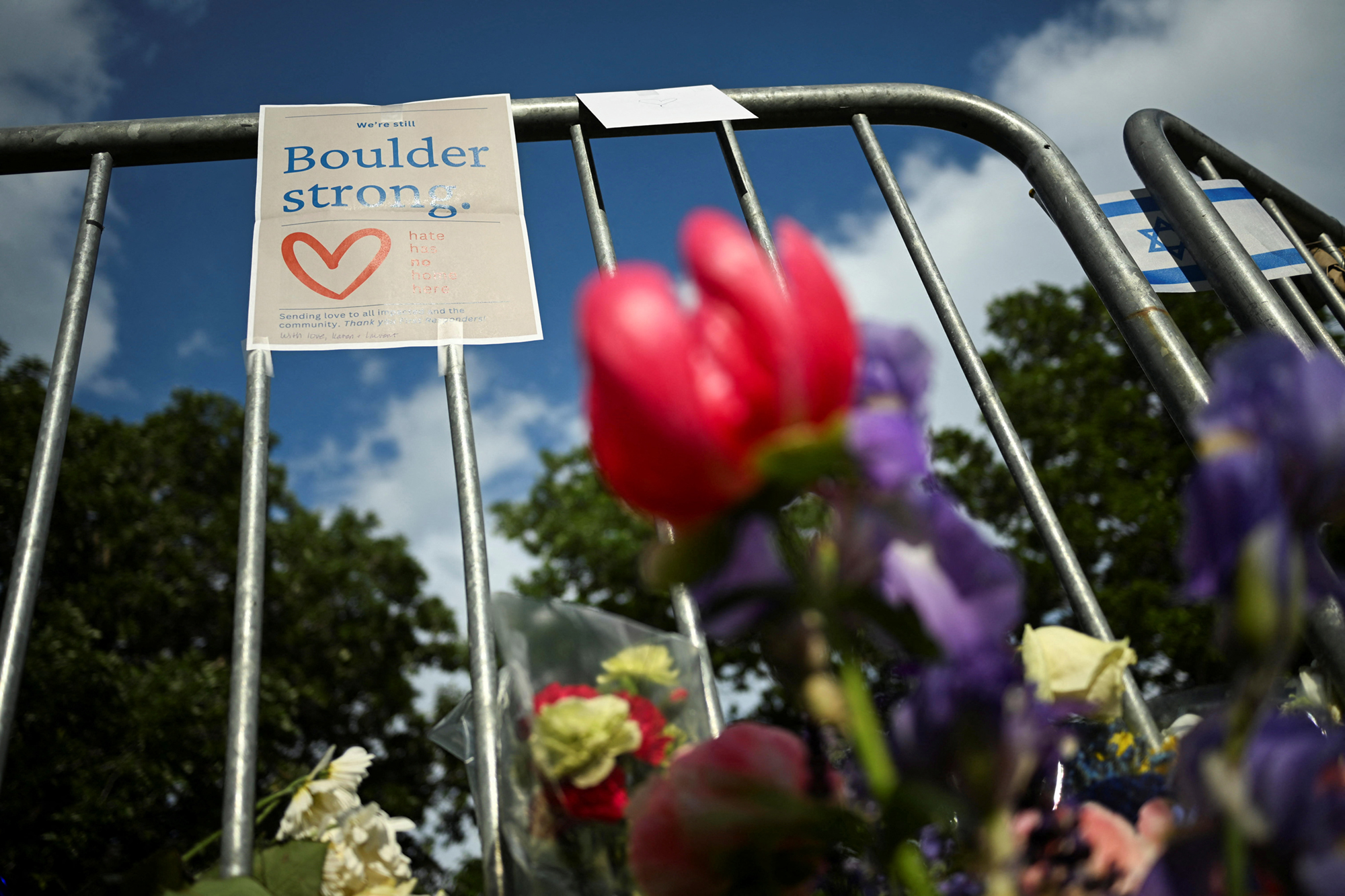Minneapolis air quality ranked among the world’s worst on Saturday – Star Tribune

Air Quality Crisis in Minneapolis: A Report on Sustainable Development Goal Implications
Incident Overview
On Saturday, the city of Minneapolis, USA, experienced a significant air quality crisis, directly challenging progress toward several key Sustainable Development Goals (SDGs). The incident was caused by smoke originating from wildfires in the Canadian provinces of Manitoba and Saskatchewan, highlighting the transboundary nature of environmental challenges.
- Monitoring Platform: IQAir
- Initial Air Quality Index (AQI): 107 (Unhealthy for Sensitive Groups)
- Initial Global Ranking: 5th worst among 125 monitored cities
- Later AQI: 97 (Moderate)
- Later Global Ranking: 11th
Global Air Quality Context
The severity of the situation in Minneapolis is underscored by its ranking relative to other major international cities on Saturday morning. The only cities recording worse air quality were:
- Kinshasa, Congo
- Kolkata, India
- Baghdad, Iraq
- Dubai, United Arab Emirates
Within the United States, Minneapolis’s air quality was notably worse than that of Los Angeles and Chicago during the peak of the event.
Implications for SDG 3: Good Health and Well-being
The air quality event represents a direct threat to SDG 3, which aims to ensure healthy lives and promote well-being for all. The high concentration of pollutants in the air poses significant health risks, undermining Target 3.9 to substantially reduce illnesses from air pollution.
- The AQI of 107 is officially categorized as unhealthy for individuals with conditions like asthma and chronic obstructive pulmonary disease.
- Officials warned that fine particulate matter from wildfire smoke can enter the bloodstream, causing severe respiratory problems and other health concerns.
- The Minnesota Pollution Control Agency extended its air quality alert, acknowledging the persistent health threat and the potential for increased emergency room visits.
Implications for SDG 11: Sustainable Cities and Communities
This incident highlights a critical challenge to SDG 11, particularly Target 11.6, which calls for reducing the adverse per capita environmental impact of cities by paying special attention to air quality.
- The event demonstrates the vulnerability of urban populations to environmental factors originating far beyond city limits.
- Maintaining a safe and resilient urban environment is compromised when air quality reaches such hazardous levels.
- The failure to protect citizens from airborne pollution indicates a setback in achieving the goal of making cities inclusive, safe, resilient, and sustainable.
Root Causes and Links to SDG 13 & SDG 15
The proximate cause of the pollution—wildfires—is intrinsically linked to broader global environmental goals.
- SDG 13 (Climate Action): The increasing frequency and intensity of wildfires are recognized consequences of climate change. This event serves as a tangible example of the immediate impacts of a changing climate, necessitating urgent action.
- SDG 15 (Life on Land): The wildfires in Canada represent a significant degradation of terrestrial ecosystems and forests. Protecting and restoring these ecosystems is fundamental to preventing such environmental crises and their far-reaching consequences.
Analysis of Sustainable Development Goals (SDGs) in the Article
1. Which SDGs are addressed or connected to the issues highlighted in the article?
The article on air quality in Minneapolis connects to several Sustainable Development Goals (SDGs) by highlighting the interconnectedness of environmental health, human well-being, and urban living.
-
SDG 3: Good Health and Well-being
This goal is directly addressed as the article’s central theme is the negative health impact of poor air quality. It explicitly mentions that the air was “unhealthy for people with sensitive conditions like asthma and chronic obstructive pulmonary disease” and warns that “tiny particles in the smoke can enter the bloodstream and cause breathing problems and other health concerns, leading to an increase in emergency room visits.”
-
SDG 11: Sustainable Cities and Communities
The article focuses on the environmental conditions within an urban area, Minneapolis. It ranks the city’s air quality against other major cities worldwide (“Minneapolis had the fifth worst air quality among 125 cites worldwide”). This directly relates to the goal of making cities and human settlements inclusive, safe, resilient, and sustainable, with a particular focus on environmental quality.
-
SDG 15: Life on Land
This goal is relevant because the source of the air pollution is identified as “Smoke from wildfires in Manitoba and Saskatchewan.” Wildfires are a major issue affecting forests and ecosystems on land. The event described in the article is a direct consequence of a disturbance to terrestrial ecosystems, linking the health of forests to the health of urban populations.
2. What specific targets under those SDGs can be identified based on the article’s content?
Based on the issues discussed, the following specific SDG targets can be identified:
-
Target 3.9: Substantially reduce deaths and illnesses from pollution
This target aims to “By 2030, substantially reduce the number of deaths and illnesses from hazardous chemicals and air, water and soil pollution and contamination.” The article’s content aligns perfectly with this target by detailing the health risks posed by air pollution from wildfire smoke. The mention of “breathing problems,” “health concerns,” and an “increase in emergency room visits” directly refers to the illnesses caused by air contamination.
-
Target 11.6: Reduce the environmental impact of cities
This target is to “By 2030, reduce the adverse per capita environmental impact of cities, including by paying special attention to air quality…” The article’s entire focus is on the poor air quality in Minneapolis, using the Air Quality Index (AQI) to quantify this environmental impact. The comparison with other cities like Los Angeles, Chicago, and others worldwide underscores the focus on urban environmental performance.
-
Target 15.2: Promote sustainable management of all types of forests
This target aims to “promote the implementation of sustainable management of all types of forests, halt deforestation, restore degraded forests…” While the article does not discuss forest management practices, it identifies “wildfires in Manitoba and Saskatchewan” as the root cause of the pollution. Large-scale wildfires are often linked to challenges in forest management and land health, making this target relevant to the source of the problem.
3. Are there any indicators mentioned or implied in the article that can be used to measure progress towards the identified targets?
Yes, the article mentions and implies specific indicators that are used to measure progress towards these targets.
-
Indicator for Target 11.6 (Indicator 11.6.2: Annual mean levels of fine particulate matter (e.g. PM2.5 and PM10) in cities)
The article explicitly uses the Air Quality Index (AQI) as a measure, providing specific values for Minneapolis (“AQI ranking of 107” and “AQI of 97”). The AQI is a composite index based on several pollutants, including the fine particulate matter (PM2.5) that this official SDG indicator tracks. The article reinforces this by mentioning that “tiny particles in the smoke” are the cause of health issues, which directly refers to PM2.5.
-
Indicator for Target 3.9 (Indicator 3.9.1: Mortality rate attributed to household and ambient air pollution)
While the article does not provide mortality data, it implies the measurement of health impacts by stating that poor air quality leads to an “increase in emergency room visits.” This serves as a direct proxy indicator for morbidity (illness) rates attributed to ambient air pollution, which is a key component of measuring progress towards reducing the health burden of pollution.
4. Summary Table of SDGs, Targets, and Indicators
| SDGs | Targets | Indicators Identified in the Article |
|---|---|---|
| SDG 3: Good Health and Well-being | Target 3.9: By 2030, substantially reduce the number of deaths and illnesses from hazardous chemicals and air, water and soil pollution and contamination. | Implied Indicator: Morbidity rates from air pollution, as evidenced by the “increase in emergency room visits” and health problems for sensitive groups. |
| SDG 11: Sustainable Cities and Communities | Target 11.6: By 2030, reduce the adverse per capita environmental impact of cities, including by paying special attention to air quality. | Direct Indicator: Air Quality Index (AQI) values (“AQI of 107,” “AQI of 97”), which measures the level of fine particulate matter (“tiny particles in the smoke”). |
| SDG 15: Life on Land | Target 15.2: Promote the implementation of sustainable management of all types of forests. | No specific indicator mentioned in the article, but the issue is linked through the mention of “wildfires in Manitoba and Saskatchewan” as the source of pollution. |
Source: startribune.com

What is Your Reaction?
 Like
0
Like
0
 Dislike
0
Dislike
0
 Love
0
Love
0
 Funny
0
Funny
0
 Angry
0
Angry
0
 Sad
0
Sad
0
 Wow
0
Wow
0












































































